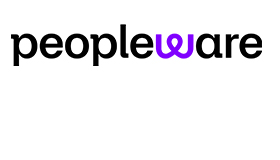Marén Römisch of injixo discusses the benefits of having a cloud workforce management (WFM) system.
Cloud WFM software is popular today. Modern contact centers prefer it to solve their workforce management challenges.
While there are so many solutions to choose from, finding the right cloud-based WFM tool is not easy.
Adding to this challenge: many products labeled as “cloud” are not true cloud solutions. How’s that possible?
Cloud Technology Comes With Many Advantages
To really understand this topic, it’s essential to understand the value that cloud systems deliver over locally hosted, on-prem solutions. Most companies choose a cloud product for the following reasons:
- Lower cost
- Scalability
- Flexibility
- Security
- Risk minimization
These are, in short, the deciding factors to consider a cloud solution over an on-premise one. Every cloud-based WFM tool fulfills all of these expectations to a certain degree, no matter where it is on the “cloud spectrum.” But let’s take one step back: Which cloud-based product types exist, and how do they differ from each other?
“Cloud” Is an Elastic Concept
When WFM providers label their solution as “cloud”, it’s often not transparent to the buyer what that actually entails. Generally, three levels of cloud-ness exist:
- An existing on-prem software is taken and put in the cloud (i.e. installed on a server in the cloud). This happens in many industries and is often referred to as “faux cloud”.
- In so-called “hybrid” cloud solutions, some parts of the software are hosted by the vendor in the cloud and some parts are locally hosted by the client. A common scenario is that databases are stored locally on the client side.
- With 100% cloud-based (“true cloud”) systems, the entire software solution is built from the ground up around the cloud.
These differences are technical by nature, but they do have tangible upsides and downsides. So, what are the benefits of the different scenarios? Should a workforce manager or contact center manager care if the solution they consider buying is truly cloud or not?
The answer is: Yes – because it can make a great difference. Let me explain why.
Hosting On-Premise Software in the Cloud Doesn’t Make It Cloud
Let’s have a look at the first scenario. Vendor A sells their on-prem WFM solution successfully for years. Wanting to meet the growing demand for cloud software, they then take the existing application and put it online “in the cloud.” That’s a pragmatic approach that has worked well in the past – injixo started in such a way, too. It comes with several challenges, though.
The main challenge is buying these kinds of cloud solutions is a bit of a blackbox for you as a customer. Of course, you do still have major advantages over on-prem solutions, such as having no physical hardware components installed in your contact center. But those are improvements compared to on-prem systems.
Some functionalities might still be outdated compared to “true cloud” systems. This can have diverse effects on your daily work that you normally wouldn’t expect from a cloud solution. Disadvantages may include:
- You may not have a web interface, but remote desktop access.
- You might still need internal IT support for e.g. updates.
- Updates are only released periodically, not continuously.
- There is usually less extensibility through APIs available.
These four exemplary restrictions are very diverse. Their occurrence and gravity heavily depends on the vendor. But if you pay for a “faux cloud” product, you will never fully benefit from the advantages of a “hybrid” or “true cloud” system.
If you are in the research process and shortlist potential WFM vendors, you will hardly be able to tell if the tool you see is falling into this category. Your best chance is simply not to trust “cloud” labels.
Determine hard purchase criteria that your WFM cloud tool should fulfill (e.g. as described below) and evaluate if the products you are considering are fully fulfilling the expectations you set.
Hybrid Cloud Systems Are a Common Alternative to On-Prem
Hybrid tools (splitting the hosting between client and provider) are sometimes consciously preferred over pure cloud products. This is the case for many companies with security policies or regulations that require internal data to be hosted locally. For example, many companies in the finance industry require hybrid solutions.
Sometimes, it’s simply old habits to prefer hosting data internally. Coming from a traditional on-prem system (or manual Excel planning), the thought of trusting an external provider to store confidential data can be scary.
If this has always been managed in-house before, chances are that many stakeholders will claim it “feels wrong” to trust an external provider with this task.
These concerns are often coming from IT teams and aren’t wholly unfounded: Data breaches have happened with cloud products before. The interesting part is that this risk is just as existent when you store data locally.
Cloud providers generally provide a very secure infrastructure and network that comes with advanced functionalities to keep your data safe (such as data encryption, distributed backups etc.).
But even the most sophisticated cloud technology is not secure if the software of the solution provider itself isn’t secure. That’s where you need to work closely together with your IT experts, as they can deliver a valuable perspective in the decision-making process.
Defining data security requirements and checking those against the different solutions on the market is a great way to ensure that your data is protected in the best possible way.
–> If there is no actual (legal) need for a hybrid solution, you may as well directly benefit from a full-fledged cloud system. But if there are internal barriers that make it impossible to switch to a cloud system, consider purchasing a hybrid tool. It will be a great improvement compared to manual or on-premise planning, without the transparency in performance that “faux cloud” products come with.
A hybrid cloud solution is generally the best option for contact centers that legally can’t or aren’t ready yet to switch to a full-fledged cloud product.
In contrast to faux cloud products, hybrid tools are easy to identify: if you still are partially responsible for hosting and maintenance, then it’s a hybrid solution. Let’s take a look at a true cloud solution and how it differs from the others.
How to Identify a True Cloud-Based WFM Solution
As explained, a 100% based cloud software is completely hosted and managed by the provider. It grants the full extent of cloud benefits which are not “capped” in any way. When you are purchasing a cloud-based WFM tool, look for the following criteria:
1. You hardly need IT support
True cloud solutions require little manual effort from the customer’s IT department. This is a main differentiating factor compared to other cloud product types. For faux cloud products this depends on the provider – in the worst case, you might even need internal IT support for regular tasks such as installing updates.
Using hybrid solutions you naturally need to manage the internally hosted components and their protection fully in-house. With full-fledged cloud products, the vast majority of common IT tasks are handled by the solution provider. This is especially valuable for contact centers that do not have the dedicated IT infrastructure expertise in-house or are seeking quick turnaround times without internal dependencies.
2. You don’t need to buy any hardware, either
It’s clear that on-prem solutions require customers to physically buy, store and maintain hardware on their data center. What many people don’t know: Hybrid solutions require that, too. To a lesser extent, but you will still need to invest in purchasing server hardware.
Then you’ll have to employ skilled people to maintain it and ensure reliable connectivity. The total cost of ownership can quickly sum up financially and adds workload that is often underestimated. And all this comes at a hidden cost, too: Would you still be able to fully benefit from the promised flexibility?
It is true that you are not tied in regarding contractual terms. But switching providers might not feel like an available option if you have already invested so much to reach the status quo.
3. You get the performance results you are expecting
Cloud is almost a buzz word nowadays. Much of its fame is because of the increased performance it promises. With 100% cloud-based solutions, you enjoy maximum performance.
This is thanks to the scalability that cloud technology provides: A true cloud system adapts to the user demand in an instant. This can have a great effect on the daily work routine of planners as they do not have to wait as long for calculations to run and reports to load.
Seasonality isn’t an issue since users are added and removed quickly. Processing power is always there when needed. Nothing can really “slow down” your work, even when the software is complex.
Take the injixo Forecast as an example: This feature relies on its advanced algorithms working fast and accurately in the background. Using cloud technology, performance always matches actual demands fully automatically, as cloud providers take care of this aspect completely on their own.
4. You are always up-to-date
True cloud solutions are updated constantly (sometimes multiple updates in a single day), and users don’t need to do anything to get updates. This is a great benefit that is very noticeable in the daily work of WFM planners, who will benefit from a smoothly running system in many ways. New features are available in an instant.
Bugs are fixed before you might have even encountered them. Performance optimizations are carried out constantly. To give you an idea of how big an impact this can have: For injixo cloud products, we ship around 100 improvements per month. As the user is not responsible for these updates, they only benefit from the advantages.
Choose a System That Fits Your Needs
Keeping these three different types of cloud products in mind will hopefully help you to navigate through the WFM solution jungle.
More important than consciously choosing the right product type is to determine which requirements are your must-haves.
If you have these sorted out, it will be much easier to evaluate which solution on the market suits you best.
As cloud enthusiasts, we generally recommend a full-fledged cloud solution, as the advantages are very compelling. But there are circumstances that make also a hybrid solution a worthwhile alternative – especially if you are facing legal restrictions.
This blog post has been re-published by kind permission of Peopleware – View the Original Article
For more information about Peopleware - visit the Peopleware Website
Call Centre Helper is not responsible for the content of these guest blog posts. The opinions expressed in this article are those of the author, and do not necessarily reflect those of Call Centre Helper.
Author: Peopleware
Published On: 21st Apr 2020
Read more about - Guest Blogs, Peopleware






 Peopleware is a leading workforce management (WFM) solution, trusted by over 500,000 users in 30+ countries. With smart forecasting, automated scheduling and real-time management, organizations can optimize workforce efficiency and keep work aligned with demand. From precise time tracking to flexible planning, Peopleware helps organizations boost operational efficiency and foster a more engaged, productive workforce.
Peopleware is a leading workforce management (WFM) solution, trusted by over 500,000 users in 30+ countries. With smart forecasting, automated scheduling and real-time management, organizations can optimize workforce efficiency and keep work aligned with demand. From precise time tracking to flexible planning, Peopleware helps organizations boost operational efficiency and foster a more engaged, productive workforce. 































